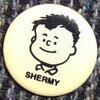The credit is intended mainly to reward efficiency through fixture and fitting selection, compared against a baseline case. If the water pressure available to your project is low, then I don't see how you could justify using the lower pressure for your design case but not your baseline case. Do you?
You rely on LEEDuser. Can we rely on you?
LEEDuser is supported by our premium members, not by advertisers.
Under earlier versions of LEED there were a number of CIRs about this question specifically, and the responses were consistently in line with Tristan's - the pressure listing is for consistency in calculations, you need to find fixtures that do better than the baseline fixtures, calculated at the pressure listed.
I agree that having a lower available street pressure does not qualify because the baseline and design case would be the same. It does seem to me that adding a pressure reducing device in the system to lower the pressure should qualify as reduction overbaseline. Adding a pressure reducing valve where required by code is not acceptable because it also would have the same baseline and design case pressure. The plumbing codes I am familiar with require pressure to be reduced to 80 psi or less. I believe one could argue that 80 psi baseline could be argued against a lower psi design case. It would be complicated to verify the final flow rates, because the pressure drop in the system would need to be calculated for each fixture. One would then need to have the fitting (shower head, etc) tested at the lower pressure and determine the actual flow rate at that pressure for each fixture.
I would be more inclined to reduce flow rate at the fixtures using orifice plates or some similar device. ITT Bell and Gossett makes a lead free flow setter which is adjustable to whatever flow you set, and it can also be used as a service valve. See model RF-1/2/S LF. Another option is to place a disc with an orifice in it before the aerator or fitting. The orifice size will dictate flow rate according to pressure. For example, a 1/16" diameter orifice will flow 1.05 gpm at 80 psi and 0.74 gpm at 40 psi.
Add new comment
To post a comment, you need to register for a LEEDuser Basic membership (free) or login to your existing profile.




